When it comes to explaining the poor state of nature-based artisanal and subsistence livelihoods of communities, many conservation and development folks in countries like Bangladesh or India or Nepal have one mantra they think fits all the complexities; the tragedy of the commons. Experts use this doctrine to explain any such challenges — whether in forests or in the wild-caught fisheries.
Generally, this explanation without compelling evidence works as a justification for top-down interventions that come later in the process. Later, comes the conservation interventions embedded with the heavy-handed enforcement by security agencies that disregard the well-being of marginalized communities and mostly focused on securing supply for nature’s goods for the urban consumers with suitable purchasing power.
To my experience, Hilsa fishery in the Bay of Bengal and Ganges-Brahmaputra-Meghna watershed is such a case, particularly in Bangladesh. About 50-60 percent of global Hilsa (Tenualosa ilisha) catch is reported from Bangladesh (Rahman, Emran, & Islam, 2010). This is the world’s largest tropical estuarine fishery.
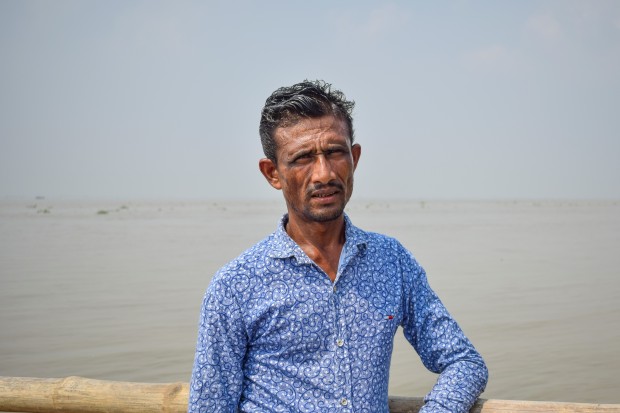
Despite the extreme poverty among the artisanal and subsistence fishing communities, Hilsa conservation in Bangladesh relies on heavy-handed enforcement of laws that oftentimes impose disproportionate punishments. Imagine, a fisher who don’t have anything to feed his family might get one-year imprisonment for fishing during fishing ban seasons. Such disproportionate punishment started at the beginning of this decade.
For instance, only from 2011-2012 to 2013-2014 fiscal year, executive ‘courts’ embedded with law enforcing agencies imposed 2,462 prison sentences and fined 106,509 USD to law-breaking fisherfolks under Jatka (juvenile) and brood Hilsa conservation activities (Islam, Mohammed, & Ali, 2016).
Currently, the annual 22-day long ban season to protect brood Hilsa is underway throughout the country.
Earlier this month, I’ve volunteered to take part in CSO monitoring of this ban season in Meghna river, and currently traveling in Brahmaputra river basin for the same. We are talking to fisherfolks and other river-dependent communities to understand what are their recent experiences with conservation and what are their thoughts about community-stewardship of riverine ecosystems. Before that, earlier this year, I led a study to understand human dimensions of Hilsa conservation in the context of community-stewardship and trans-boundary cooperation among countries sharing Ganges-Meghna-Brahmaputra river system. We collected data mostly through semi-structured and non-structured qualitative interviews, and participant observation.
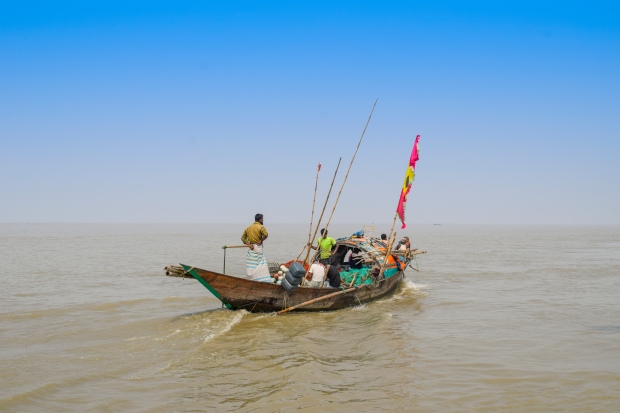
The results of CSO-led monitoring and the previous study are expected to be published in the due process. Both of the works are part of the Trans-Boundary Rivers of South Asia (TROSA) project’s activities in Bangladesh. I was invited by two local NGOs to take part; Gana Unnayan Kendra and Center for Natural Resources Studies (CNRS) who are partners with TROSA.
In the meantime, I’d like to share a few notes based on my learning and observations. I’ve already shared these following notes with colleagues from India, Nepal, Myanmar, Thailand, Vietnam, Cambodia and other Asian and European countries at the annual learning forum of TROSA in Kathmandu, Nepal from 24 to 25 July 2018. (See also this web-story on GWP’s site)
NOTES
1. The fisherfolks explain that despite very low income they don’t plan to stop fishing because fishing is their traditional (Chouddo purus) ‘life’ (Jebon), and all other aspects of their lives are interconnected with their fishing identity. In differently worded statements, most of them echoed the attitude that they can’t think about any other livelihood options and lifestyle other than fishing because this is what their ‘jaat’ (inheritance), and this is in their blood; diversely paraphrased Bengali dialects they have used can be translated into ‘this is who we are’.
2. The fisherfolks don’t think ‘the tragedy of the commons’ can explain the process behind the decline of the fishery. Most of the respondents identify ‘problems’ in the supply chain and conservation regime. They think fisheries conservation are reluctant to engage and utilize community’s readiness to conserve the rive- commons including fisheries. A notable number of the fisherfolks indicates that fisheries conservation are not willing to look into complex issues related to the migratory character of Hilsa fish and is not prepared for delivering conservation-benefits to local communities.
3. About all of the fishermen said, by ‘conservation of fisheries’ they understand ‘gun’ (bonduk) meaning police and other law enforcing agencies they encounter. They clearly determine that the ‘slow revival’ of the fishery is not bringing any significant benefits to them as the old supply chain is still in place.
4. Traditional fishing families blame diversion of water for irrigation both in Bangladesh and upstream countries for the poor state of fish habitat, and they also think rising use of synthetic fertilizers, pesticide, and insecticide in agriculture are to blame for dwindling catch.
5. Fisherfolks say they were always willing to be the stewards of fisheries biodiversity (nijeder ta nijeder e rokkha korte hobe), but they also need to feed their families.
6. When it comes to their expected state of community well-being, they place the highest value on spending time with families, ability to afford education for their children, and capacity to continue their generational fishing occupation. When asked what will be the ‘most rewarding outcome’ from a potential revival of the health of the riverine ecosystem and the Hilsa fishery, a large number of them said they ‘will be able to spend more time with their families’ because they will not be needing to go for fishing trips throughout day and night. Most of them said they can ‘die in peace’ by knowing that ‘the future of their children is secured.
The heavy-handed and disproportionate law enforcement neither take into account this strong environmental ethic that defines these traditional fishing communities nor care about their well-being.
Now it’s the responsibility of local CSOs, NGOs to explore more about human dimensions of such fisheries conservation, to gather more insights into the river basin communities’ readiness for the stewardship of environmental commons.
Photos: All photos taken by me
References:
Rahman, M. A., Emran, M., & Islam, M. S. (2010). Hilsa fisheries management in Bangladesh. Regional Consultation on Preparation of Management Plan for Hilsa Fisheries. Chittagong.
Islam, M. M., Mohammed, E. Y., & Ali, L. (2016). Economic incentives for sustainable hilsa fishing in Bangladesh: An analysis of the legal and institutional framework. Marine Policy, 68, 8–22. https://doi.org/10.1016/j.marpol.2016.02.005


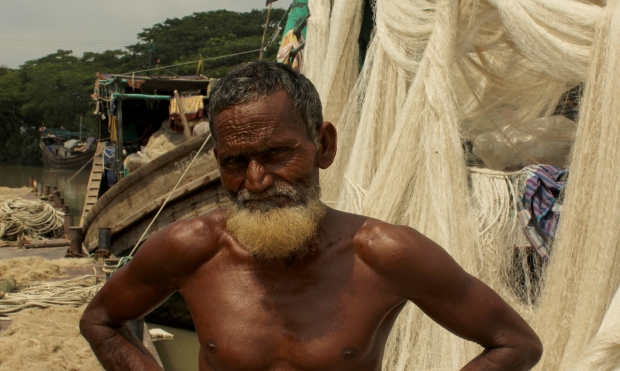
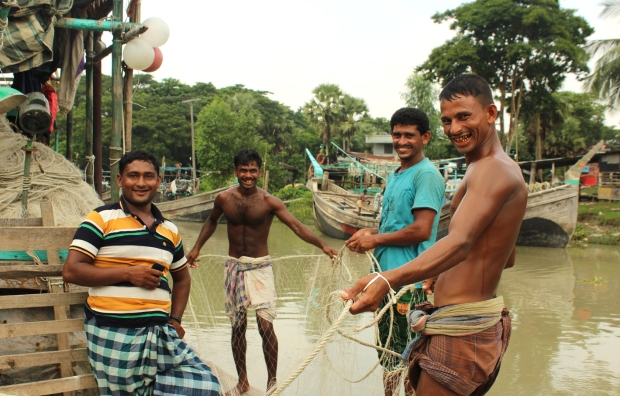
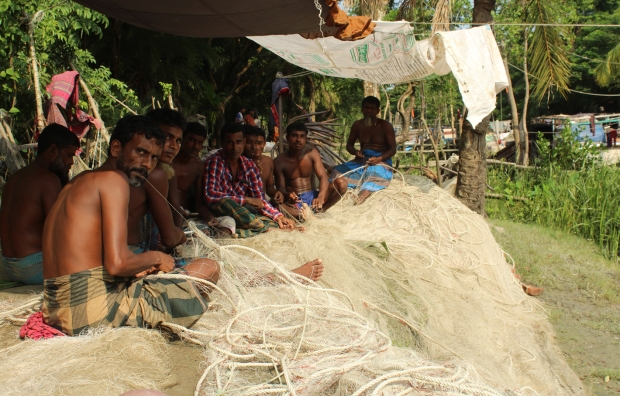
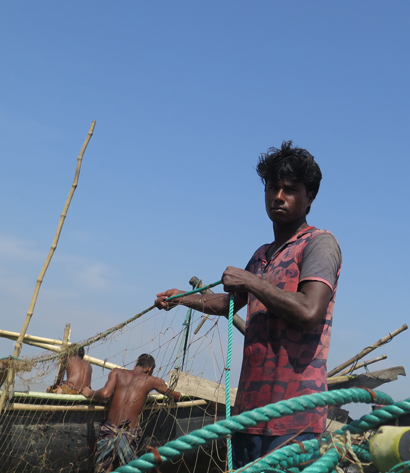 Kalam Miah, ‘the giant catfish’, as his fellow fisher folks call him, lives on the bank of the mighty Padma in Rajbari district. During the ban on Hilsa fishing, this inner coast fishing community was still in the river with their nets especially made for catfish. Mesh size of their net is so big that average Hilsa can get through, but not their targeted giant freshwater catfishes such as Boal, Aor, Pungus. First imposed in 2003-04 the October ban to protect spawning Hilsa was 15-day long in previous years, in place to an area of 7,000 square kilometers that includes rivers in 27 districts. This year, along with the extended time, it also included the coastal water and the total area of Exclusive Economic Zone in the Bay of Bengal.
Kalam Miah, ‘the giant catfish’, as his fellow fisher folks call him, lives on the bank of the mighty Padma in Rajbari district. During the ban on Hilsa fishing, this inner coast fishing community was still in the river with their nets especially made for catfish. Mesh size of their net is so big that average Hilsa can get through, but not their targeted giant freshwater catfishes such as Boal, Aor, Pungus. First imposed in 2003-04 the October ban to protect spawning Hilsa was 15-day long in previous years, in place to an area of 7,000 square kilometers that includes rivers in 27 districts. This year, along with the extended time, it also included the coastal water and the total area of Exclusive Economic Zone in the Bay of Bengal.
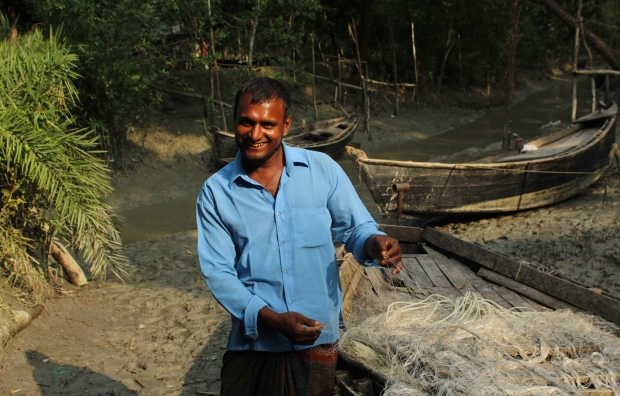

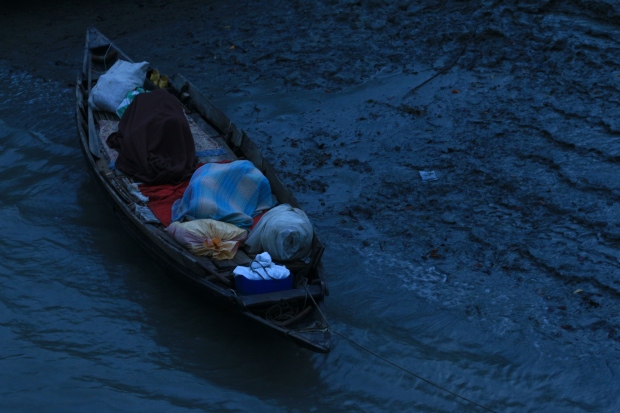
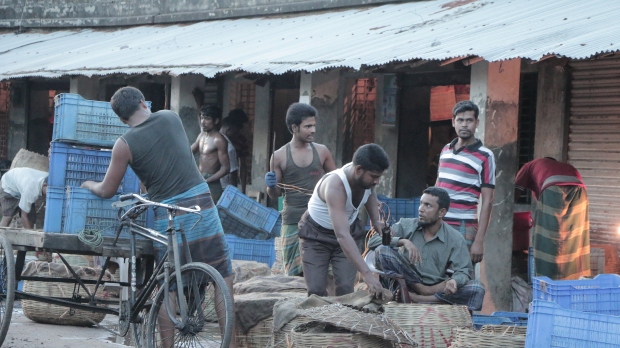
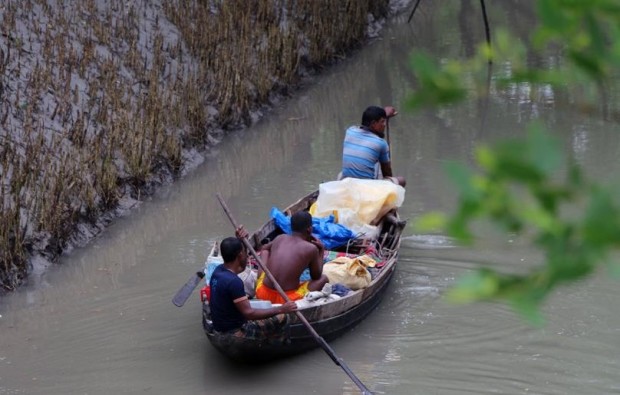
You must be logged in to post a comment.